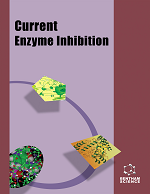
Full text loading...

Ficus palmata is a herbaceous perennial plant belonging to the family Moraceae. It is used in various diseases, e.g., gastrointestinal disorders, tumours, hypoglycaemia, ulcers, hyperlipidaemia, diabetes, and fungal infections.
The fruit of the Ficus palmata plant was extracted. The total phenolic and total flavonoid content were determined. Following column chromatography, phytoconstituents were isolated and identified by mass spectroscopy, FTIR, and NMR. The antioxidant activity of phytoconstituents was evaluated, and molecular docking studies were performed against the H+K+-ATPase enzyme and H2 Receptor.
The extract from Ficus palmata yielded rich in flavonoids and phenolic content. Isolation of compounds was done and characterized to be rutin and luteolin. The further evaluation of the antioxidant activity of compounds demonstrated significant activity with an IC50 value indicating strong free radical scavenging activity. Molecular docking studies were performed against the H+K+-ATPase enzyme and H2 Receptor, revealing that both compounds exhibit high binding affinity and favourable interactions with key sites.
The study revealed that Ficus palmata fruit extract is a rich source of flavonoids and phenolics, notably rutin and luteolin. These compounds demonstrated strong antioxidant activity through various free radical scavenging assays. Molecular docking suggested their potential as inhibitors of the H+K+-ATPase enzyme and H2 receptor, indicating antiulcer potential. These findings support the therapeutic relevance of Ficus palmata in oxidative stress-related gastric disorders.
The findings suggest that the isolated compounds rutin and luteolin possess potential antioxidant activity and could be a potential therapeutic target for the H+K+-ATPase enzyme and H2 Receptor.

Article metrics loading...

Full text loading...
References


Data & Media loading...